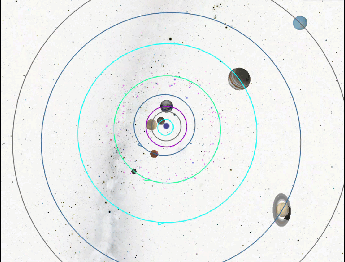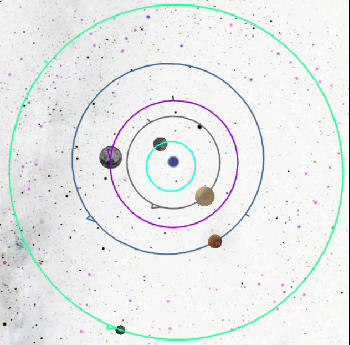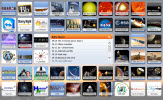April 2024
This month all seven of the planets will be above the horizon with Venus, Neptune, Saturn, and Mars rising ahead of the Sun and lined up from east to west. Look further west and you may see the Dwarf Planet Ceres.
At sunset local time look west for the other three planets, Mercury, Jupiter, and Uranus lined up from west to east. Both Neptune in the morning skies and Uranus in the evening skies have apparent magnitudes too dim to be seen without some optical assistance.
The remining visible planet is the horizon! The Earth, can't miss it!!
ICYMI:
On April 8, 2024, much of the eastern side of the United States will experience a total solar eclipse. The arrrangement of the the Sun, our Moon, and the daytime side of the Earth will 'see' the Moon's shadow path starting on Mexico's Pacific coast, then crossing the United States from Texas to Maine, before reaching Newfoundland and coming to an end over the Atlantic Ocean.
There will be many opportunities for viewing the eclipse from in-person to online streaming.
Click here to learn more about this or any other solar or lunar eclipse.
Click here for the month at a glance calendar.

What is this? "It's a prediction of when Lees Summit, MO, will have good weather for astronomical observing." Click on the graphic to go to the Clear Sky web site.

Mercury moves into inferior conjunction, between the Earth and the Sun, around the middle of the month and then reappears in the morning skies toward the end of the month.
Venus will be a challenge to see in the hour or so before sunrise local time, and over the next 2 months Venus will gradually move into superior conjunction, on the other side of the Sun from us, before reappearing in the evening skies later rthis summer.
Mars is starting to become easier to see before the Sun rises and will continue this trend as the separation between the Sun and Mars increases. Watch for a close conjunction between Mars and Saturn on the mornings of April 11th and 12th.
Dwarf Planet Ceres is located within the teapot-shaped constellation Sagittarius the Archer and during April it will traverse most of the teapot shape but with an apparent magnitude of 7.8 it will too faint to to be seen without optical assistance.
Jupiter is visible but very low over the southwestern horizon at sunset local time and by the end of the month will be too close to the Sun to be seen.
Saturn has returned to the morning skies and as the separation between this ringed planet and the Sun increases it too, like Mars, becomes easier to see as it continues rising ahead of the Sun.
Uranus follows Jupiter as they both are low over the southwestern horizon at sunset local time and like Jupiter will be lost in the setting Sun's glare by the end of the month. With an apparent magnitude of 5.8 Uranus may still be visible with the naked eye in dark enough skies, or at least with binoculars.















